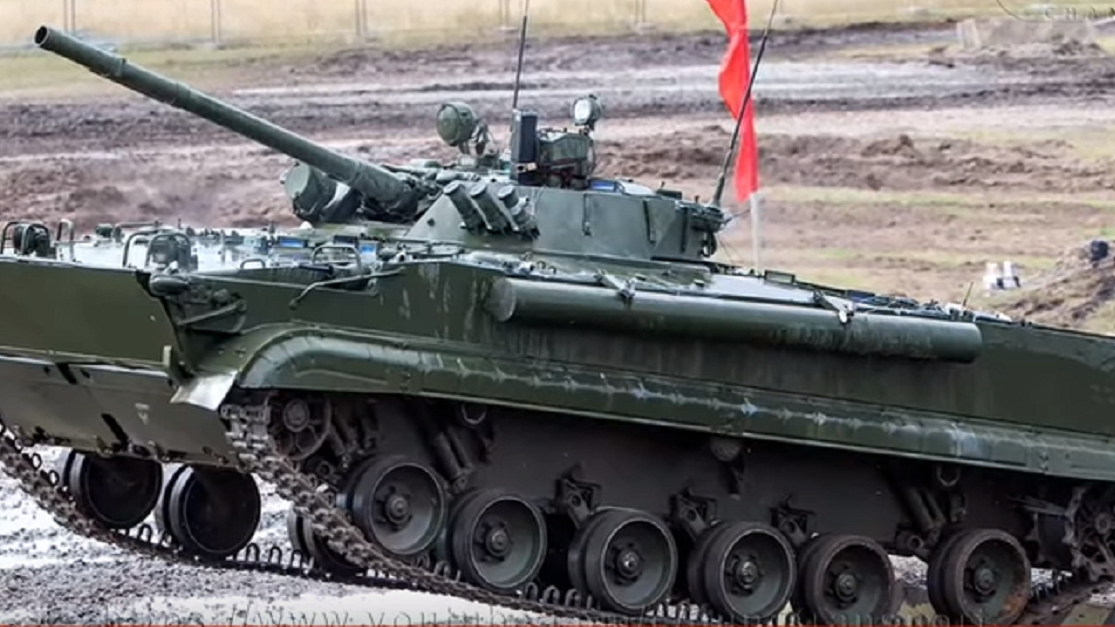This infantry fighting vehicle has the firepower of a tank

SUMMARY
When it entered service in 1966 with the Soviet Red Army, the BMP-1 infantry fighting vehicle was revolutionary.
Like most armored personnel carriers, it could carry a squad of troops. However, it changed the game of armored warfare by adding what was at the time considered heavy armament for a troop carrier, including a 73mm gun with 40 rounds, and the AT-3 Sagger anti-tank missile.
This configuration created what may have been one of the first true infantry fighting vehicles.
The BMP became the means of carrying infantry for the Soviet Union's tank divisions, while partially displacing the BTR armored personnel carriers in the motor rifle divisions. In the last years of the Cold War, the Soviets unveiled the BMP-3, the latest in the BMP series.
According to MilitaryFactory.com, the BMP-3 can carry seven infantrymen and has a crew of three. However, this infantry fighting vehicle has the firepower of the T-55 main battle tank, as its primary armament is a 100mm rifled gun with 40 rounds. It still retains the capability to fire anti-tank missiles, this time the AT-10 Stabber through that 100mm gun. It also retained the 30mm autocannon on the BMP-2.
The end of the Cold War and the fall of the Soviet Union, though, meant that the BMP-3 did not get the wide production run of the BMP-1 and BMP-2. Analysts note that roughly 700 BMP-3s were built, as compared to 26,000 BMP-1s.
Like the earlier BMPs, the BMP-3 has been exported to Russian partner countries. The biggest non-Russian user is currently the United Arab Emirates, which has purchased over 400 of the vehicles. Others include Venezuela, Kuwait, the Ukraine, and Indonesia. Ironically, South Korea has bought some of these vehicles as well, meaning that if the crisis with North Korea goes hot, BMP-3s could be facing off against one another.
You can see a video about the BMP-3 below.
SHARE
